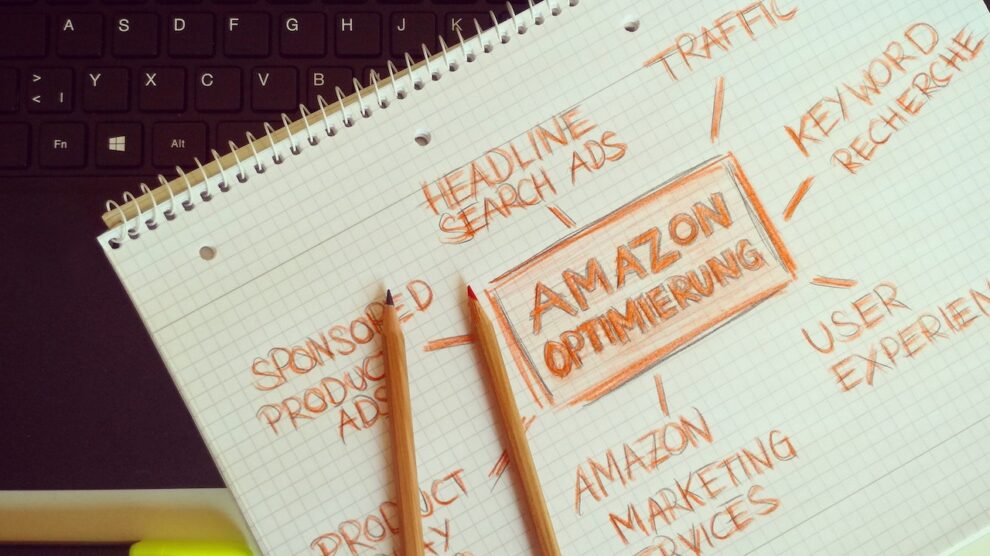Amazon Advertising and Google Ads are today’s most popular digital advertising platforms. Businesses can sell their products and services directly to Amazon’s massive customer base. At the same time, the Google Ads platform enables businesses to create adverts that appear on Google’s search results pages, websites, and apps.
Amazon Advertising and Google Ads are essential because they provide businesses with a very effective and affordable way to reach their target audience. These platforms can help companies increase website traffic, brand recognition, sales, and revenue.
Many successful digital marketing strategies need these platforms since they help link businesses with potential customers and promote growth. Check out the article below for a guide to Amazon advertising and Google Ads strategies that will work best for your brand.
What is Amazon Advertising?
Amazon Advertising allows businesses to advertise their products and services on Amazon’s and its partner websites. The platform offers various advertising types, each with unique advantages and targeting options to help businesses reach their ideal audience.
Sponsored Products
This advertising type allows businesses to promote their products on Amazon’s search results and product detail pages. This type increases the visibility and sales of specific products and helps companies to improve overall sales on the platform.
Sponsored Brands
Businesses showcase their brand and product portfolio at the top of search results pages, making them visible to a broader audience. This can drive awareness and consideration for brands and products, helping them reach new customers on Amazon.
Sponsored Display
Businesses reach customers interested in their products on or off Amazon. This type can retarget customers who have previously viewed or added products to their Amazon cart and encourage them to purchase.
What is Google Advertising?
Google Ads enables companies to produce and place their ads on Google’s search engine results pages (SERPs) and other websites and mobile applications that are a part of the Google Advertising network. There are three main types of Google ads digital marketers can use.
Search Ads
When someone searches for a particular word or phrase, Google displays these advertisements at the top of the search results pages. A company’s website can receive targeted visitors via search ads, which also improves the website’s exposure on Google.
Display Ads
Users can see these advertisements on Google Advertising network-compliant websites and mobile applications. Display ads can boost brand recognition and consideration by reaching potential customers using applications and websites relevant to a company’s goods or services.
Video Ads
Searchers see these advertisements on video-sharing websites like YouTube. Video advertisements can raise consumer awareness of a company, pique interest, and motivate viewers to act, such as visiting a website or purchasing.
Comparing Amazon Advertising vs. Google Ads
When deciding which platform to utilize, businesses must consider the substantial differences between Google Ads and Amazon Advertising, even though they have certain similarities regarding targeting possibilities and measurable results. Here’s a breakdown of their core differences.
Targeting Options
Google Ads target audiences based on search queries, interests, and behaviors and may be more effective for brands with a broader reach. At the same time, Amazon Advertising focuses on customer purchase histories, product searches, and customer reviews, working best for businesses with a niche product offering.
User Intent
Digital marketers frequently employ Google Ads for search advertising when customers actively look for goods or services linked to a company’s offers. In contrast, other digital marketers would use Amazon Advertising for product promotion when customers browse or make Amazon purchases.
Measurement Metrics
Businesses can use metrics from Amazon Advertising, such as impressions, clicks, and purchases, to assess the effectiveness of their advertising campaigns. Conversely, Google Ads gives comparable data like impressions and.
These conversion metrics inform organizations about how well their advertising campaigns work and how many people perform specific actions, such as purchasing or filling out a lead form.
Conversion Tracking
Whereas Google Ads requires establishing conversion actions for each tracked event on a website, such as a purchase or a lead form submission, Amazon Advertising automatically follows orders and sales for any marketed products.
Although setting up conversion monitoring can be challenging for new users, Google provides comprehensive instructions and customer support.
Which is Better for Your Business?
Businesses may find it challenging to decide between Google Ads and Amazon Advertising because each platform has unique characteristics that might help various. The fact is that the best option will depend on multiple factors.
Companies who sell products on Amazon may find that Amazon Advertising is better because it allows them to target customers based on their prior purchases, product searches, and customer reviews. For businesses that want to increase brand recognition and reach a larger audience, Google Ads may be a better option since it targets consumers based on search queries, interests, and behaviors.
Assess the other factors below and try to see which ones nudge your business toward Google Ads or Amazon Advertising:
- Business goals,
- Target audience
- Budget
- Type of product/service
- Competition
- Level of brand awareness
- Level of advertising experience
- Conversion tracking requirements
- User interface and ease of use
- Customer behavior and intent
- Advertising campaign flexibility
Case Studies
While learning about what each platform provides is helpful, reading case studies can be even more eye-opening in understanding how each can benefit businesses.
How Saraf Furniture Leveraged Google Ads to Increase Revenue
The Saraf Furniture case study focuses on how the business used Google Ads to increase online sales and enhance its online visibility. The company raised its click-through and conversion rates, leading to a 30% rise in online sales, by developing focused campaigns based on particular categories and keywords.
With the help of Google Analytics, the business understood client behavior and modified its marketing initiatives, contributing to its ongoing success in the online advertising market.
How Roomify Increased Sales by 273% with Amazon Advertising
Furniture shop Roomify collaborated with an Amazon advertising firm and put their sponsored brands, sponsored items, and sponsored display ads approach into action.
They boosted their return on ad spend (ROAS), attracted new clients, and increased sales on Amazon by 273% by refining their campaigns, choosing the right keywords, and employing Amazon’s data-driven insights.
Maximizing Advertising Success with Google Ads or Amazon Advertising
Companies can profit in various ways from both Google AdWords and Amazon Advertising.
Amazon is best suited for businesses that sell products and wish to boost sales through targeted product marketing. However, for companies trying to increase website traffic, lead generation, and brand recognition, Google is the ideal choice.
While deciding between the two, businesses should consider their objectives, target market, and budget. Using both platforms at once can be lucrative in raising awareness and revenue. Ultimately, careful planning and a winning approach can lead to success on either platform.





